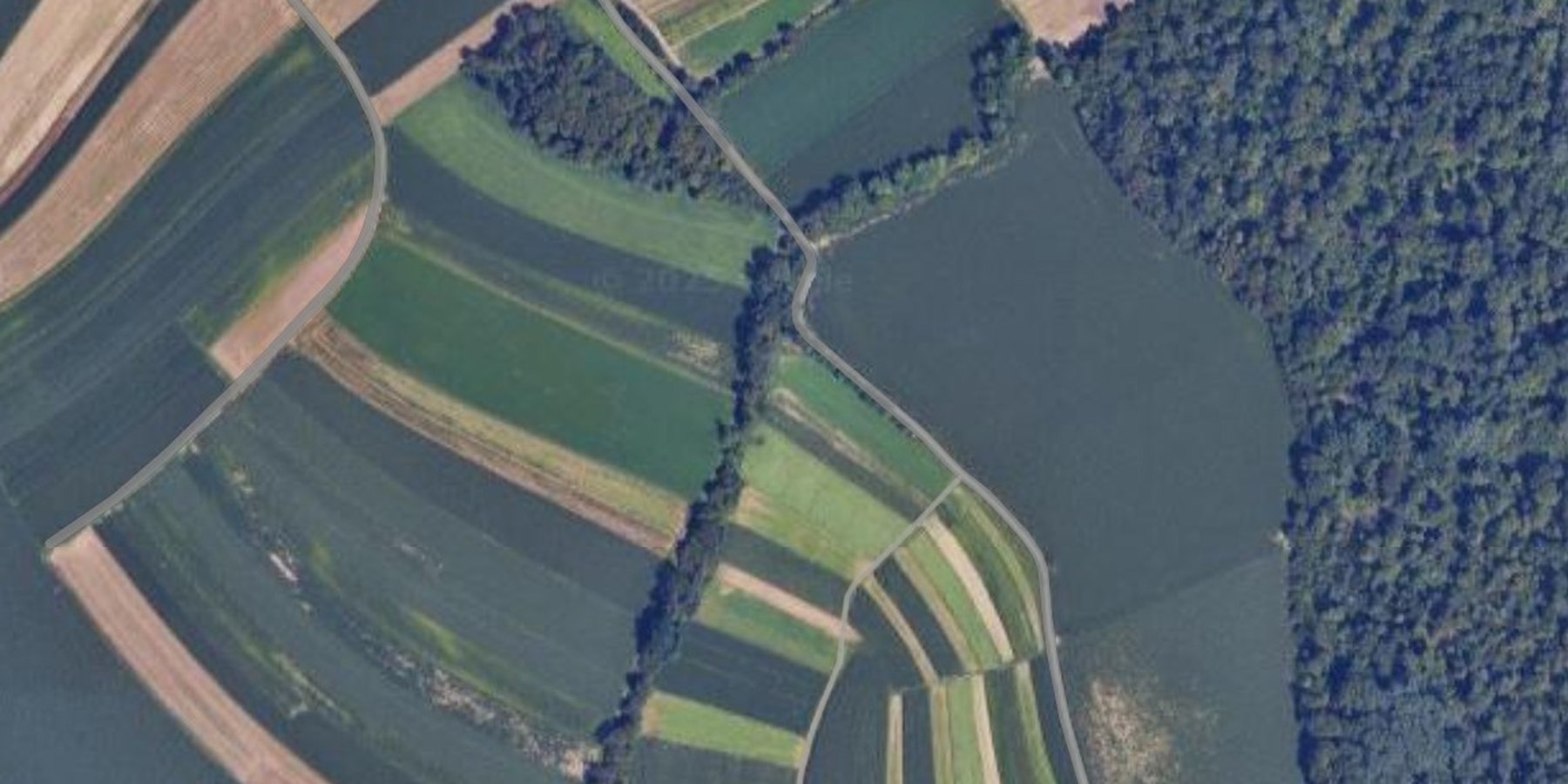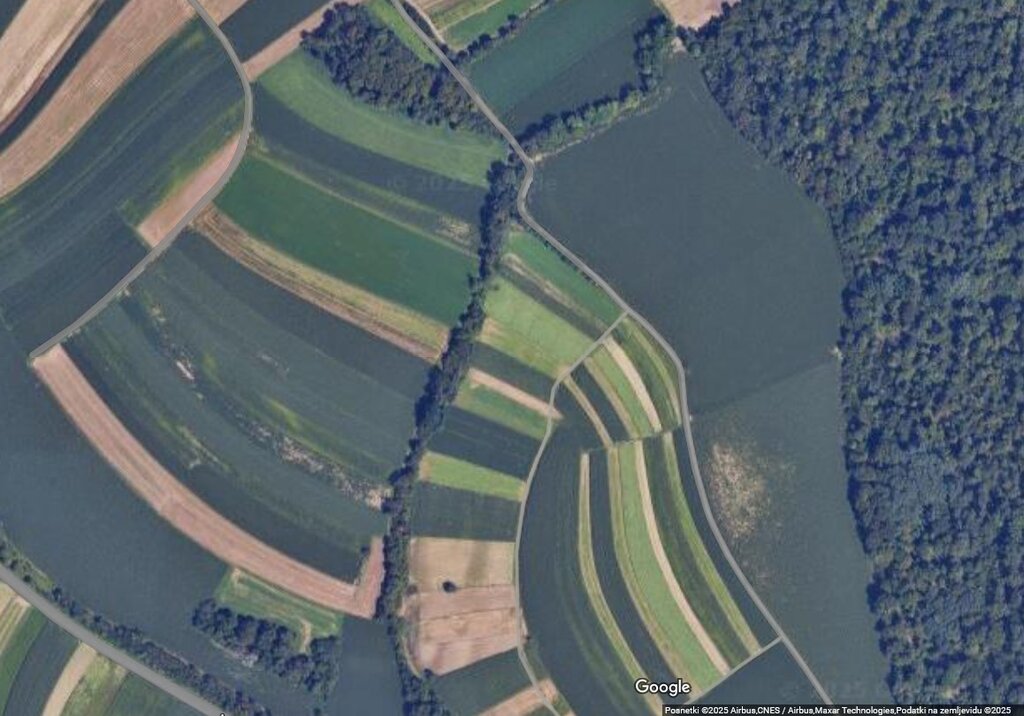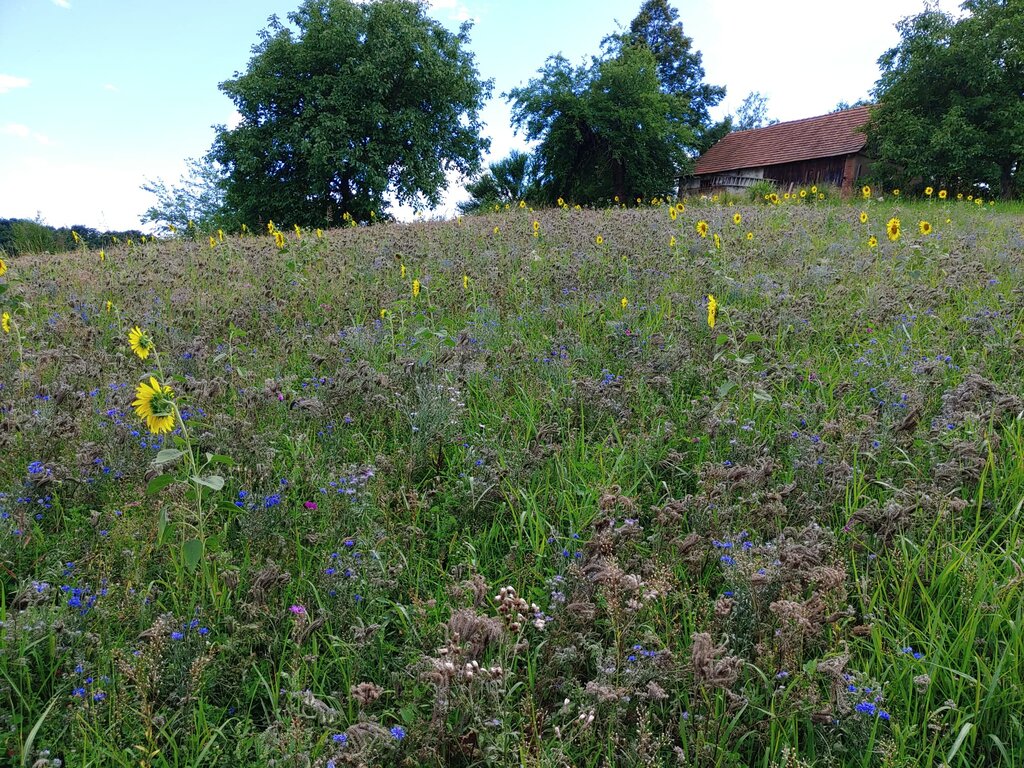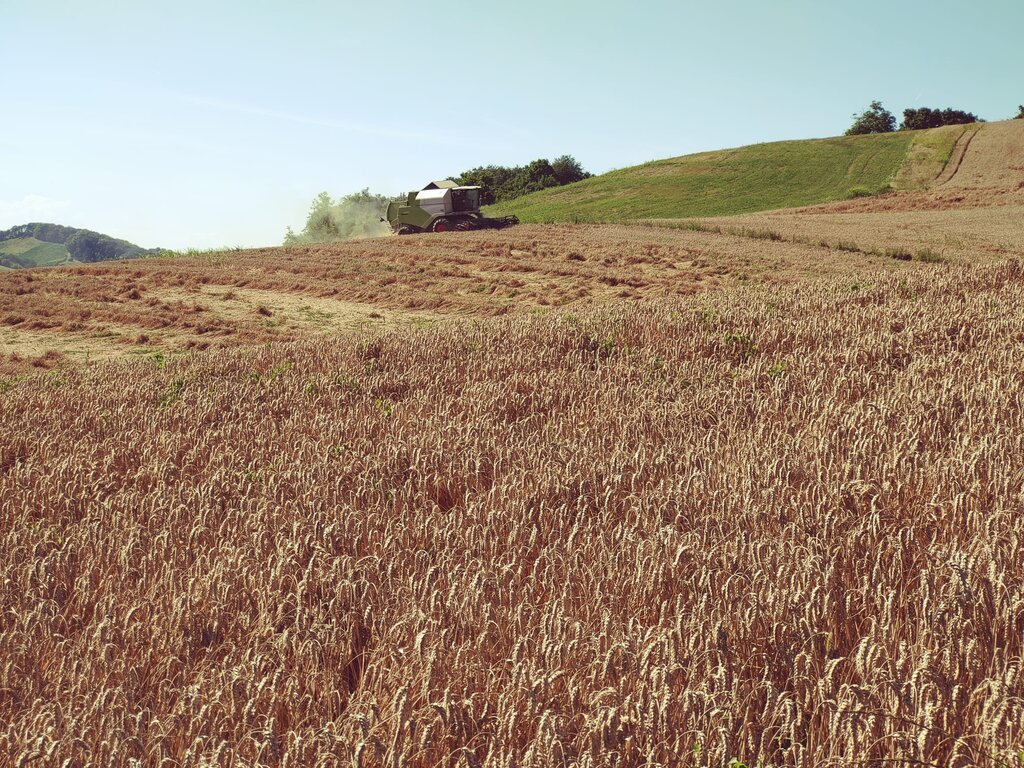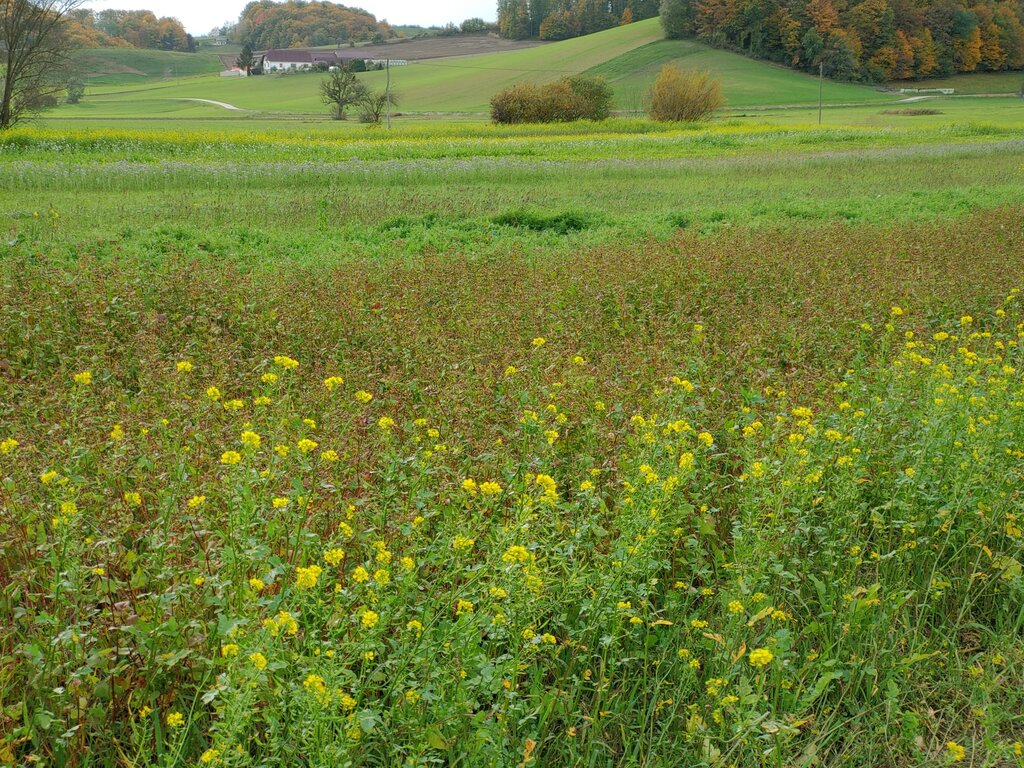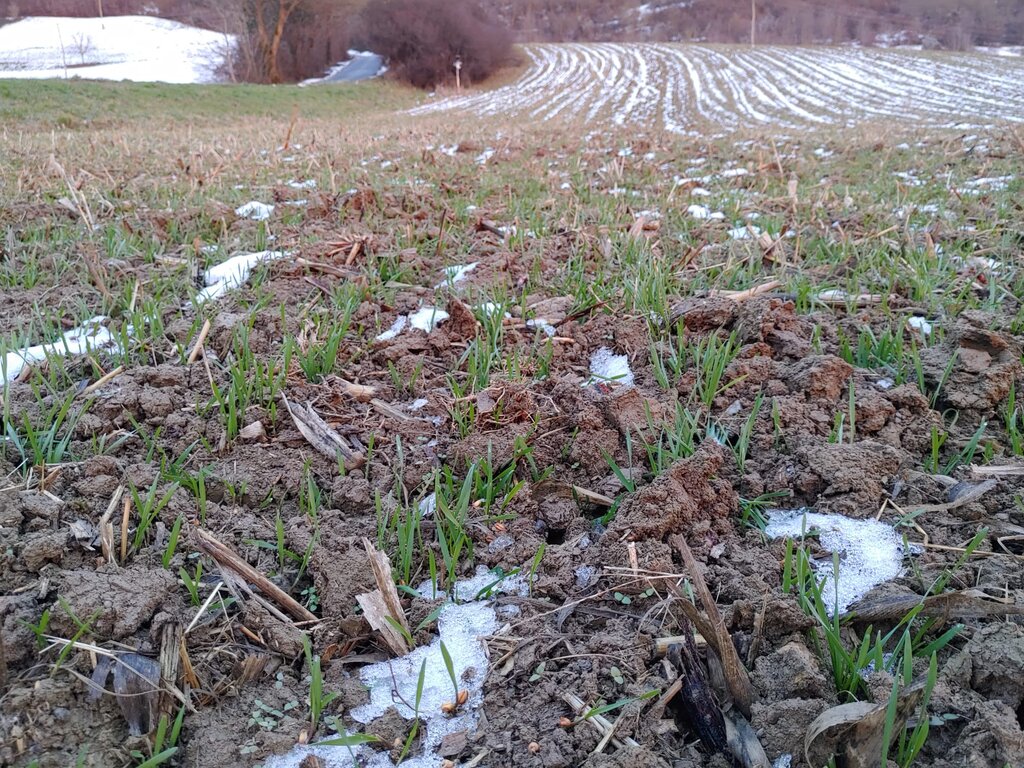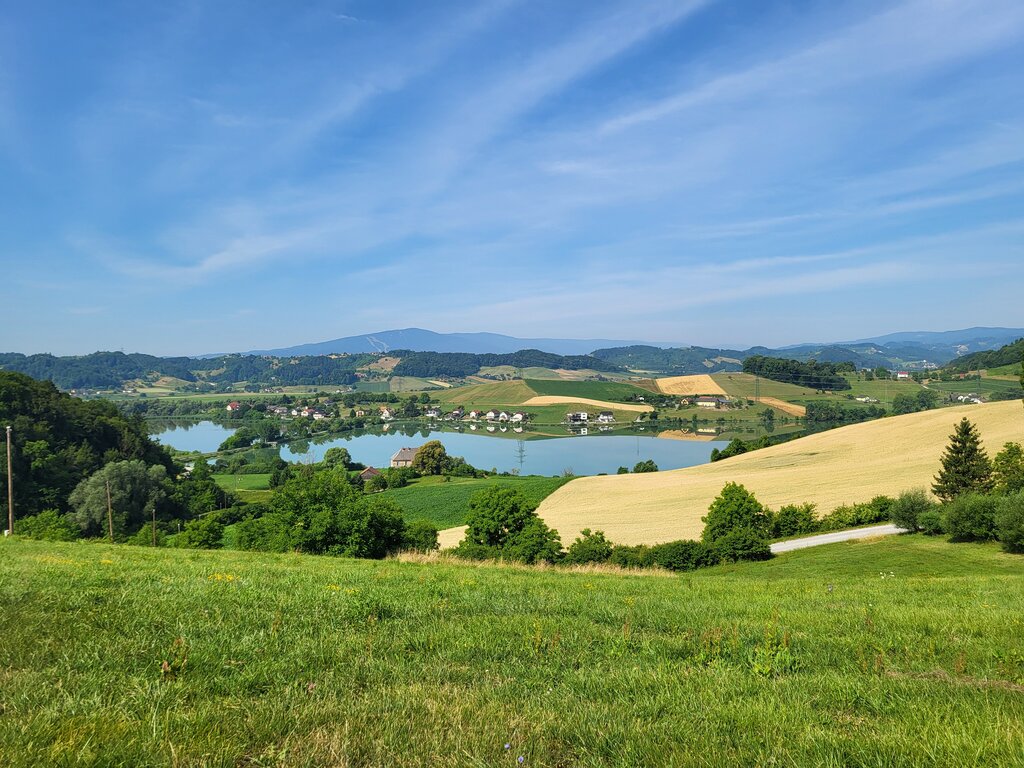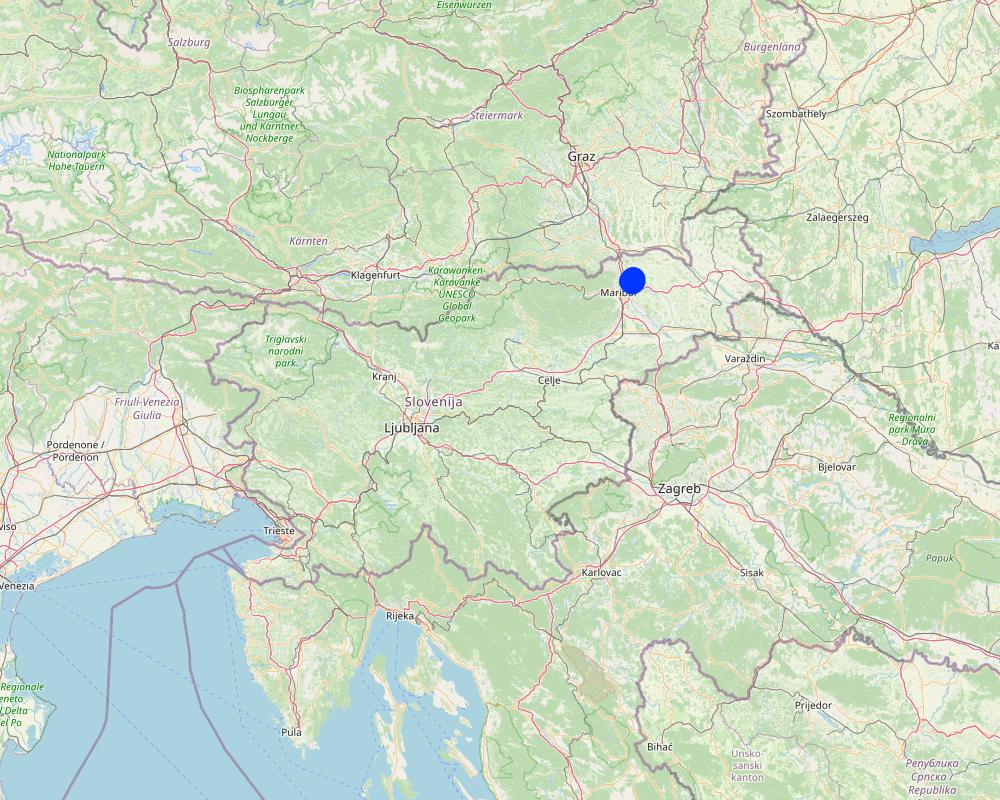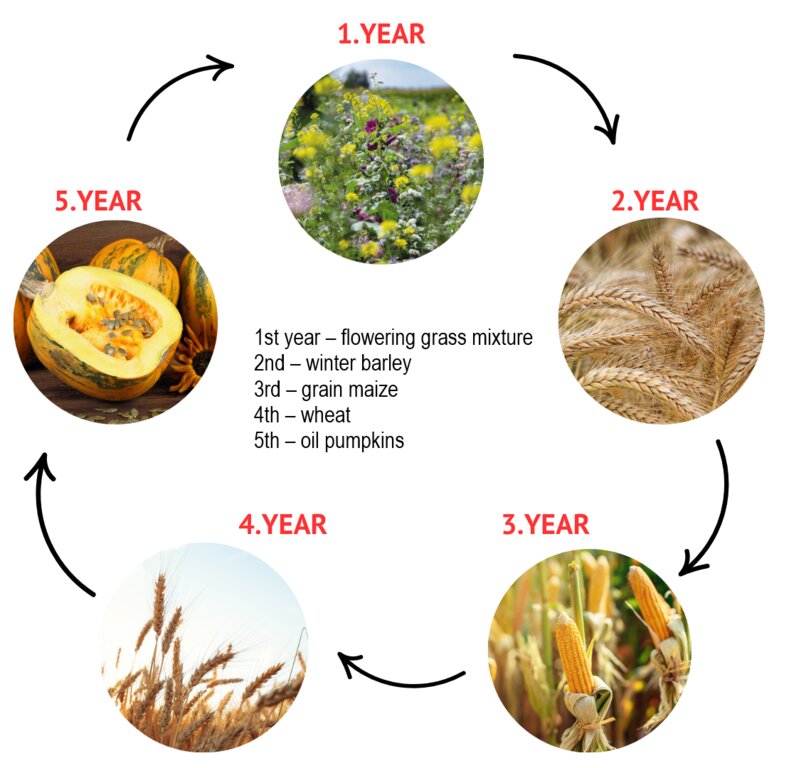5-Year Crop Rotation [Словен]
- Шинийг нээх:
- Шинэчлэх:
- Эмхэтгэгч: Gregor Kramberger
- Хянан тохиолдуулагч: Tamara Korošec
- Хянагчид: Rima Mekdaschi Studer, William Critchley
5-letni kolobar
technologies_6239 - Словен
Бүлгүүдийг үзэх
Бүгдийг дэлгэх Бүгдийг хаах1. Ерөнхий мэдээлэл
1.2 Технологийг үнэлэх, баримтжуулах ажилд хамаарах мэдээлэл өгсөн хүмүүс, байгууллагуудын холбоо барих мэдээлэл
ГТМ мэргэжилтэн:
хамтран эмхэтгэгч:
Horvat Timotej
Chamber of Agriculture and Forestry of Slovenia (KGZS) – Institute of Agriculture and Forestry Maribor
Словен
хамтран эмхэтгэгч:
Viltužnik Martina
Chamber of Agriculture and Forestry of Slovenia (KGZS) – Institute of Agriculture and Forestry Maribor
Словен
Газар ашиглагч:
Ropič Andrej
Farmer
Словен
ГТМ мэргэжилтэн:
Kep Tina
Chamber of Agriculture and Forestry of Slovenia (KGZS) – Institute of Agriculture and Forestry Maribor
Словен
Технологи баримтжуулах/үнэлэх ажилд дэмжлэг үзүүлсэн төслийн нэр (шаардлагатай бол)
OPtimal strategies to retAIN and re-use water and nutrients in small agricultural catchments across different soil-climatic regions in Europe (OPTAIN)Технологи баримтжуулах/үнэлэх ажилд дэмжлэг үзүүлсэн байгууллага(ууд)-ын нэр (шаардлагатай бол)
Chamber of Agriculture and Forestry of Slovenia – Institute of Agriculture and Forestry Maribor (KGZS) - Словен1.3 ВОКАТ-аар баримтжуулсан өгөгдлийг ашиглахтай холбоотой нөхцөл
Эмхэтгэгч болон гол мэдээлэгч хүн(хүмүүс) WOCAT аргачлалаар баримтжуулсан мэдээллийг ашиглахтай холбоотой нөхцлийг хүлээн зөвшөөрсөн:
Тийм
1.4 Технологи тогтвортой гэдгийг баталгаажуулах
Энэ технологийг газрын доройтлыг бууруулж, газрын тогтвортой менежментийг хангахад тохиромжтой гэж үзэж болох уу?
Үгүй
2. ГТМ Технологийн тодорхойлолт
2.1 Технологийн товч тодорхойлолт
Технологийн тодорхойлолт:
Crop rotation is good practice in agricultural production. It comprises alternating different types of crops, usually in a specific order. Crop rotation maintains soil fertility, reduces the risk of diseases and pests, and optimizes nutrient utilization. In Slovenia, a 5-year rotation is proving especially effective.
2.2 Технологийн дэлгэрэнгүй тодорхойлолт
Тодорхойлолт:
Crop rotation is a system of alternating arable crops, forage plants, aromatic herbs, and vegetables, generally in a specific sequence. It can be applied in fields, gardens, or enclosed growing spaces. Crop rotation is adaptable and can be used under different farming systems, such as organic, integrated, and conventional farming. It maximises the efficiency of biological, organizational, and spatial influences on soil and plants. The fundamental element of crop rotation is the selection of plant species that are most effectively alternated on the same piece of land over different years. To ensure the best selection, it is essential to understand the farming technology, the type and structure of the soil, and its nutrient composition.
By implementing good crop rotation, nutrient utilization is optimized, and the risk of diseases and pests is reduced. Crop rotation also ensures the sustainable use of soil by improving its structure and fertility. The inclusion of cover crops in a rotation helps to maintain continuous soil cover. Crop rotation also facilitates better adaptation to climate change (drought, hail, floods etc), depending on the plants included in the rotation. The inclusion of green manure crops and the use of organic fertilizers can reinforce crop rotation and further support soil fertility enhancement and conservation.
To establish and maintain crop rotation, a detailed plan must be prepared, including the selection of crops based on soil characteristics, nutrient requirements, and crop sequencing needs. A fertilization plan should also be developed in parallel. It is crucial to ensure appropriate agricultural machinery, especially for specialty crops, and to have sufficient labour available, as more complex rotations may increase workload. Additionally, market research for new crops and demand assessment should be conducted.
In summary, crop rotation offers numerous benefits:
- Enhances soil fertility and improves soil structure.
- Reduces diseases, pests, and weeds.
- Minimises nutrient leaching and soil erosion.
- Increases organic matter content in the soil.
- Boosts biodiversity and strengthens soil resilience to weather changes.
- Enables efficient resource utilization and reduces production costs.
Thus, crop rotation offers numerous benefits that farmers appreciate – all of which help ensure higher and more sustainable yields. However, this technology requires specific knowledge, precise planning, and careful scheduling, which increases the complexity of production. It also demands more labour and sometimes additional machinery, leading to higher production costs. Furthermore, marketing various crops requires careful consideration, which can pose a challenge for farmers.
Crop rotation in Slovenia is supported by Agri-Environmental-Climate Payments (CAP), which enables farmers to receive funding for implementing a diverse and effective crop rotation system.
An effective 5-year rotation system in Slovenia typically follows the following sequence:
1st year – flowering grass mixture
2nd – winter barley
3rd – grain maize
4th – wheat
5th – oil pumpkins
This ensures that at least three different annual crops are grown within the five years, while integrating legumes like alfalfa or red clover every 3–4 years to enrich soil nitrogen levels. Cereals may appear up to three times in the rotation, but never in consecutive years. After cereal crops the farmer may alternatively sow non-winter-hardy honey-producing cover crops. Despite this structured guidance, many rotations in Slovenia remain too narrow. National laws and guidelines for agri-environmental measures support farmers in designing good crop sequences.
2.3 Технологийн гэрэл зураг
2.5 Энэ үнэлгээнд хамрагдсан технологийг хэрэгжүүлсэн улс орон/ бүс нутаг/ байршил
Улс:
Словен
Улс/аймаг/сум:
Jareninski dol, Pernica
Байршлын дэлгэрэнгүй тодорхойлолт:
Vosek
Технологи өргөн дэлгэрсэн эсхийг тодорхойл:
- газар дээр жигд тархсан
Технологи газар нутгийн хэмжээнд жигд тархсан бол түүний эзлэх талбайг тодорхойлно уу (км2-аар):
137.0
Технологи(иуд) нэвтрүүлсэн талбай тусгай хамгаалалттай газар нутагт байрладаг уу?
Үгүй
Тайлбар:
In the case study area of Pesnica, OPTAIN project.
Map
×2.6 Хэрэгжсэн хугацаа
Байгуулсан тодорхой оныг мэдэхгүй бол баримжаа хугацааг тодорхойл:
- <10 жилийн өмнө (саяхны)
2.7 Технологийн танилцуулга
Технологийг хэрхэн нэвтрүүлснийг тодорхойл:
- Газар ашиглагчдын санаачилгаар
- Туршилт/судалгааны үр дүн
Тайлбар (төслийн төрөл г.м.):
Over the years, the farmer has experimented with different farming methods and discovered the benefits of crop rotation. His rotation plan is tailored to the farm’s needs, specific production requirements related to on-farm animal husbandry, and market opportunities. He is one of several farmers in the area practicing crop rotation, which is also supported and encouraged through CAP subsidies.
3. ГТМ технологийн ангилал
3.1 Технологийн үндсэн зорилго (ууд)
- үйлдвэрлэлийг сайжруулах
- газрын доройтлыг бууруулах, сэргийлэх, нөхөн сэргээх
- экосистемийг хамгаалах
- биологийн төрөл зүйлийг хамгаалах / сайжруулах
- үр ашигтай эдийн засгийн нөлөөг бий болгох
3.2 Технологи нэвтрүүлсэн газрын одоогийн газар ашиглалтын хэлбэр(үүд)
Нэг газр нутгийн хэмжээнд хэрэгжих холимог газар ашиглалт:
Үгүй
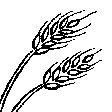
Тариалангийн талбай
- Нэг наст үр тариа
Нэг наст үр тариа - Таримлыг тодорхойлно уу:
- үр тариа - арвай
- үр тариа - эрдэнэ шиш
- үр тариа - улаан буудай (өвлийн)
- цэцэгс
- тосны ургамал - наран цэцэг, рапс ба бусад
Жилд ургамал ургах улирлын тоо:
- 1
Сөөлжлөн тариалалт хийгддэг үү?
Үгүй
Таримлыг ээлжлэн тариалдаг уу?
Тийм
Хэрэв тийм бол, тодруулна уу:
The technology is based on a 5-year crop rotation, which includes the following crops:
1st year: flowering grass mixture,
2nd year: winter barley,
3rd year: grain maize,
4th year: wheat,
5th year: oil pumpkins.
3.3 Технологи хэрэгжүүлснээр газар ашиглалтад өөрчлөлт гарсан уу?
Технологи хэрэгжүүлснээр газар ашиглалтад өөрчлөлт гарсан уу?
- Үгүй (3.4 руу шилжинэ үү)
3.4 Усан хангамж
Технологи хэрэгжүүлсэн газрын усан хангамж:
- Байгалийн усалгаатай
3.5 Технологи ГТМ-ийн аль бүлэгт хамаарах вэ
- Ээлжлэх тогтолцоо (таримал ээлжлэн тариалах, уриншлах, өнжөөн тариалах)
3.6 Технологийг бүрдүүлэх ГТМ арга хэмжээ
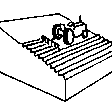
Агрономийн арга хэмжээ
- А1: Ургамал/ хөрсөн бүрхэвч
- А2: Органик нэгдэл/ хөрсний үржил шим
3.7 Технологид харгалзах газрын доройтлын төрөл
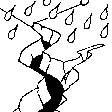
хөрс усаар эвдрэх
- Wt: Хөрсний гадаргын угаагдал
- Wg: Гуу жалгын элэгдэл
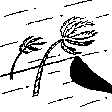
хөрс салхиар эвдрэх
- Et: Хөрсний гадаргын зөөгдөл
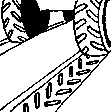
хөрсний физик доройтол
- Pc: Хөрс дагтарших
- Pk: Гадарга дээр хагсах, хагарах
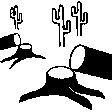
биологийн доройтол
- Bc: Ургамлан нөмрөг багасах
- Bh: Амьдрах орчин доройтох
- Bq: биомасс буурах
- Bs: Ургамлын чанар, төрөл зүйл, олон янз байдал буурах
- Bp: Хортон шавьж/өвчлөл ихсэх, махчид цөөрөх

усны доройтол
- Hp: Гадаргын усны чанар муудах
- Hq: Гүний усны чанар муудах
3.8 Газрын доройтлоос урьдчилан сэргийлэх, сааруулах ба нөхөн сэргээх
Газрын доройтолтой холбоотойгоор Технологи ямар зорилго тавьсан болохыг тодорхойл:
- газрын доройтлоос урьдчилан сэргийлэх
- Газрын доройтлыг бууруулах
4. Техникийн нөхцөл, хэрэгжүүлсэн үйл ажиллагаа, материал ба зардал
4.1 Технологийн техник зураг
Техник тодорхойлолт (техник зургийн тайлбар):
Crop sequencing: At least three different types of annual crops must be included within a five-year period.
Time intervals: Leguminous plants such as alfalfa or red clover must be incorporated every 3–4 years. In the case of maize, it can be included in the rotation a maximum of three times within five years, but never consecutively. Similarly, cereals can be included a maximum of three times in the five-year rotation.
Cover Crops: Mandatory in areas prone to erosion and where maize constitutes more than 50% of the rotation. Do not count as one of the three different agricultural crops that must be included in the five-year rotation.
Зохиогч:
Martina Viltužnik
Он, сар, өдөр:
21/02/2025
4.2 Материал болон зардалд хамаарах ерөнхий мэдээлэл
Үнэ өртөг, оруулсан хувь нэмрийг хэрхэн тооцсоныг тодорхойл:
- Технологийн нэгж тус бүр
Талбайн хэмжээ ба нэгжийг тодорхойл:
28.6 hectares
Хэрэв өөрийн уламжлалт талбайн хэмжих нэгж ашиглаж байгаа бол нэг га-д шилжүүлэх коэффициент (жишээ нь 1 га = 2.47 акр): 1 га =:
1 ha = 10.000 m2
бусад/үндэсний мөнгөн нэгж (тодорхойл):
EUR
Хэрэв боломжтой бол үндэсний валютын Америк доллартай харьцах харьцааг бичнэ үү (тухайлбал, 1 ам.дол. = 79,9 Бразил реал): 1 ам.дол. =:
0.85
Хөлсний ажилчны нэг өдрийн цалингийн хэмжээг тодорхойлно уу:
114
4.3 Бий болгох үйл ажиллагаа
| Үйл ажиллагаа | Хугацаа (улирал) | |
|---|---|---|
| 1. | Purchase of a roller | 1st year |
Тайлбар:
At the beginning, the farm is assumed to be equipped with standard agricultural machinery. However, to expand the crop rotation to a 5-year system, additional specialized equipment is usually required for cultivating new crops. Such machinery is later typically used for around 20 years or more, although the standard depreciation period for such equipment is approximately 12 years. This is only an estimated time frame, as actual usage may vary. Farmers generally continue using the roller as long as it remains functional and economically viable. Depreciation was not included in the cost calculation, as it is generally accounted for at the whole-farm level rather than per individual measure/crop production.
4.4 Бий болгоход шаардагдсан зардал, хөрөнгийн өртөг
| Зардлын нэр, төрөл | Хэмжих нэгж | Тоо хэмжээ | Нэгжийн үнэ | Зардал бүрийн нийт өртөг | Нийт дүнгээс газар ашиглагчийн төлсөн % | |
|---|---|---|---|---|---|---|
| Тоног төхөөрөмж | Roller | piece | 1.0 | 6100.0 | 6100.0 | 70.0 |
| Технологи бий болгох нийт үнэ өртөг | 6100.0 | |||||
| Технологи бий болгох нийт үнэ өртөг, ам.доллар | 7176.47 | |||||
Хэрэв газар ашиглагч нийт зардлын 100% -иас бага хэсгийг төлсөн бол хэн голлох зардлыг гаргасан бэ:
Part of the agricultural machinery intended for the implementation of environmental measures can be funded through non-repayable grants from European and national funds under the CAP.
4.5 Арчилгаа/ урсгал үйл ажиллагаа
| Үйл ажиллагаа | Хугацаа/ давтамж | |
|---|---|---|
| 1. | Total variable costs of grain maize production | Once a year |
| 2. | Total variable costs of barley production | Once a year |
| 3. | Total variable costs of wheat production | Once a year |
| 4. | Total variable costs of oil pumpkin production | Once a year |
| 5. | Total variable costs of flowering grass mixture production | Once a year |
Тайлбар:
Variable costs represent the total production costs for each specific crop, including seeds, plant nutrients, plant protection products, other material costs, variable machinery and labor costs, insurance, and financing costs.
4.6 Арчилгаа/урсгал ажилд шаардагдсан зардал, хөрөнгийн өртөг (нэг жилд)
| Зардлын нэр, төрөл | Хэмжих нэгж | Тоо хэмжээ | Нэгжийн үнэ | Зардал бүрийн нийт өртөг | Нийт дүнгээс газар ашиглагчийн төлсөн % | |
|---|---|---|---|---|---|---|
| Бусад | Variable costs of grain maize production | ha | 5.72 | 1518.0 | 8682.96 | 100.0 |
| Бусад | Variable costs of barley production | ha | 5.72 | 1112.0 | 6360.64 | 100.0 |
| Бусад | Variable costs of wheat production | ha | 5.72 | 1354.0 | 7744.88 | 100.0 |
| Бусад | Variable costs of oil pumpkin production | ha | 5.72 | 2061.0 | 11788.92 | 100.0 |
| Бусад | Variable costs of flowering grass mixture production | ha | 5.72 | 477.3 | 2730.16 | 100.0 |
| Технологийн арчилгаа/урсгал үйл ажиллагаанд шаардагдах нийт үнэ өртөг | 37307.56 | |||||
| Технологи арчилах ба урсгал ажлын нийт үнэ өртөг, ам.доллар | 43891.25 | |||||
Тайлбар:
The farmer cultivates a total of 28.6 hectares of arable land, theoretically divided into five equal parts under the 5-year crop rotation system. For comparison purposes only, if a simpler system with just maize, wheat, and barley were used and the 28.6 ha were equally divided into three parts (9.53 ha per crop), the total variable costs would amount to 37,967.52 €. Such an even distribution is not practiced in reality—it is used here solely to illustrate the cost comparison.
4.7 Зардалд нөлөөлж байгаа хамгийн чухал хүчин зүйл
Өртөг, зардалд нөлөөлөх гол хүчин зүйл:
The total area is theoretically divided into five equal parts, following the 5-year crop rotation system. However, in practice, this division is not perfectly even. Other important cost factors include variations in input prices (such as seeds, fertilizers, and plant protection products), machinery costs, labor availability, and weather conditions that impact yields and operational efficiency.
5. Байгаль ба нийгмийн нөхцөл
5.1 Уур амьсгал
Жилийн нийлбэр хур тундас
- < 250 мм
- 251-500 мм
- 501-750 мм
- 751-1,000 мм
- 1,001-1,500 мм
- 1,501-2,000 мм
- 2,001-3,000 мм
- 3,001-4,000 мм
- > 4,000 мм
Жилийн дундаж хур тунадас (хэрэв мэдэгдэж байвал), мм:
1032.00
Хур тунадасны талаархи тодорхойлолт/ тайлбар:
Most precipitation falls in summer, the months with the highest average precipitation are August and September, the least precipitation falls in winter, in January and February at least, and in principle more precipitation falls in autumn than in spring.
Холбогдох цаг уурын станцын нэр:
Jareninski Vrh (1991-2020)
Агро-уур амьсгалын бүс
- чийглэг
The average annual air temperature at Jareninski Vrh during the reference period 1991–2020 was 10.1 °C.
5.2 Гадаргын хэлбэр
Дундаж налуу:
- хавтгай (0-2 %)
- бага зэрэг налуу (3-5 %)
- дунд зэрэг налуу (6-10 % )
- хэвгий (11-15 %)
- налуу (16-30 %)
- их налуу (31-60 % )
- эгц налуу (>60 %)
Гадаргын хэлбэр:
- тэгш өндөрлөг / тал
- нуруу
- уулын энгэр
- дов толгод
- бэл
- хөндий
Өндрийн бүслүүр:
- 0-100 д.т.д. м.
- 101-500 д.т.д. м.
- 501-1,000 д.т.д м.
- 1,001-1,500 д.т.д м.
- 1,501-2,000 д.т.д м.
- 2,001-2,500 д.т.д. м.
- 2,501-3,000 д.т.д. м.
- 3,001-4,000 д.т.д м.
- > 4,000 д.т.д. м.
Технологи дараах асуудалд хандсан эсэхийг тодорхойл:
- хамааралгүй
5.3 Хөрс
Хөрсний дундаж зузаан:
- маш нимгэн (0-20 см)
- нимгэн (21-50 см)
- дунд зэрэг зузаан (51-80 см)
- зузаан (81-120 cм)
- маш зузаан (>120 cм)
Хөрсний бүтэц (өнгөн хөрс):
- дундаж (элсэнцэр, шавранцар)
Хөрсний бүтэц (>20 см-ээс доош):
- дундаж (элсэнцэр, шавранцар)
Өнгөн хөрсөнд агуулагдах ялзмаг:
- дунд (1-3 % )
5.4 Усны хүртээмж ба чанар
Гүний усны түвшин:
5-50 м
Гадаргын усны хүртээмж:
сайн
Усны чанар (цэвэршүүлээгүй):
зөвхөн газар тариалангийн зориулалтаар ашиглах (усалгаа)
Усны чанар гэж:
гадаргын ус
Усны давсжилтын асуудал бий юу?
Үгүй
Энэ газар үерт автдаг уу?
Тийм
Тогтмол байдал:
тохиолдлын
Усны чанар, нөөцийн талаархи тайлбар ба бусад тодорхойлолт:
Hydromelioration was carried out in the area, a drainage system and water retention systems (e.g. ponds and basins) were arranged.
5.5 Биологийн олон янз байдал
Зүйлийн олон янз байдал:
- дунд зэрэг
Амьдрах орчны олон янз байдал:
- дунд зэрэг
5.6 Технологи нэвтрүүлсэн газар ашиглагчдын тухай мэдээлэл
Суурьшмал эсвэл нүүдлийн:
- Суурьшмал
Үйлдвэрлэлийн системийн зах зээлийн чиг баримжаа:
- худалдаа наймааны/ зах зээлийн
Бусад эх үүсвэрээс олох орлого:
- Нийт орлогын 10-50 %
Чинээлэг байдлын түвшин:
- дундаж
Хувь хүн эсвэл бүлэг:
- Хувь хүн / өрх
Механикжилтын түвшин:
- механикжсан / мотортой
Хүйс:
- эрэгтэй
Газар ашиглагчийн нас:
- дунд нас
5.7 Газар ашиглагчийн технологи нэвтрүүлсэн газрын дундаж талбайн хэмжээ
- < 0.5 га
- 0.5-1 га
- 1-2 га
- 2-5 га
- 5-15 га
- 15-50 га
- 50-100 га
- 100-500 га
- 500-1,000 га
- 1,000-10,000 га
- > 10,000 га
Энэ талбай том, жижиг, дунд алинд хамаарах вэ (орон нутгийн нөхцөлд харгалзуулна уу)?
- дунд-хэмжээний
5.8 Газар эзэмшил, газар ашиглах эрх, ус ашиглах эрх
Газар өмчлөл:
- хувь хүн, өмчийн гэрчилгээтэй
Газар ашиглах эрх:
- түрээсийн хэлбэрээр
- хувь хүн
Ус ашиглах эрх:
- нэгдлийн хэлбэрээр (зохион байгуулалттай)
Газар ашиглах эрх нь уламжлалт эрхзүйн тогтолцоонд суурилсан уу?
Үгүй
Тодорхойлно уу:
Based on national legal system.
5.9 Дэд бүтэц, үйлчилгээний хүртээмж
эрүүл мэнд:
- ядуу
- дунд зэргийн
- сайн
боловсрол:
- ядуу
- дунд зэргийн
- сайн
техник зөвлөгөө:
- ядуу
- дунд зэргийн
- сайн
хөдөлмөр эрхлэлт (жишээ нь, ХАА-аас өөр):
- ядуу
- дунд зэргийн
- сайн
зах зээл:
- ядуу
- дунд зэргийн
- сайн
эрчим хүчний хангамж:
- ядуу
- дунд зэргийн
- сайн
зам тээвэр:
- ядуу
- дунд зэргийн
- сайн
усан хангамж ба ариутгал:
- ядуу
- дунд зэргийн
- сайн
санхүүгийн үйлчилгээ:
- ядуу
- дунд зэргийн
- сайн
6. Үр нөлөө ба дүгнэлт
6.1 Технологийн талбайд үзүүлсэн нөлөө
Нийгэм-эдийн засгийн үр нөлөө
Үйлдвэрлэл
газар тариалангийн үйлдвэрлэл
Тайлбар/ тодорхой дурьдах:
A diverse crop rotation helps maintain stable yields over a longer period by improving soil fertility, reducing disease pressure, and optimizing nutrient availability.
үр тарианы чанар
Тайлбар/ тодорхой дурьдах:
Reduced disease and pest pressure lead to healthier, more resilient plants, while increased natural soil fertility enhances overall crop quality.
тэжээл үйлдвэрлэл
Тайлбар/ тодорхой дурьдах:
The crop rotation provides an additional opportunity to grow forage crops for feed.
бүтээмж буурах эрсдэл
Тайлбар/ тодорхой дурьдах:
A diverse crop rotation enhances system resilience, reducing the risk of production failure in cases of natural disasters such as droughts or heavy rainfall and decreases the possibility of pest invasion and disease.
бүтээгдэхүүний олон янз хэлбэр
Тайлбар/ тодорхой дурьдах:
Additional crops in the rotation contribute to production diversification, reducing dependence on a single crop.
газрын менежмент
Тайлбар/ тодорхой дурьдах:
Crop rotation requires more complex land management, planning, and agronomic expertise.
Усны хүртээмж ба чанар
ундны усны чанар
Тайлбар/ тодорхой дурьдах:
Reduced use of plant protection products and synthetic fertilizers helps protect drinking water quality.
Орлого, зарлага
ХАА-н зардал
Тайлбар/ тодорхой дурьдах:
Lower use of plant protection products and synthetic fertilizers reduces input costs. Some crops in the rotation have somewhat higher seed and labour costs.
орлогын олон янз эх үүсвэр
Тайлбар/ тодорхой дурьдах:
The diversity of crops leads to a more diversified income from multiple sources.
ажлын хэмжээ
Тайлбар/ тодорхой дурьдах:
A diverse crop rotation increases workload due to more complex crop management, additional agronomic tasks, and greater administrative demands, requiring efficient planning and organization.
Нийгэм-соёлын үр нөлөө
хүнсний аюулгүй байдал/ өөрийн хэрэгцээг хангах
Тайлбар/ тодорхой дурьдах:
Some crops that currently dominate monocultures can be replaced with alternative plants, contributing to increased overall self-sufficiency.
Экологийн үр нөлөө
Усны эргэлт/ илүүдэл
усны чанар
Тайлбар/ тодорхой дурьдах:
Reduced use of plant protection products and synthetic fertilizers helps improve overall water quality. Various root systems help to better use the nitrogen and other nutrients.
Хөрс
шимт бодисын эргэлт/ сэргэлт
Тайлбар/ тодорхой дурьдах:
Including nitrogen-fixing legumes in the crop rotation enhances nutrient cycling and soil recharge. Different crops have different nutrient requirements and different root systems extract nutrients from different depths.
хөрсний органик нэгдэл/ хөрсөнд агуулагдах карбон
Тайлбар/ тодорхой дурьдах:
Including crops with higher organic residues contributes to increased soil organic matter and carbon storage.
Биологийн олон янз байдал: ургамал, амьтан
Ургамалын бүрхэвч
Тайлбар/ тодорхой дурьдах:
Flowering plants included in the rotation provide a beneficial habitat for pollinators and other insects.
газрын дээрхи / доорхи карбон
Тайлбар/ тодорхой дурьдах:
Increased organic residues contribute to higher above-ground biomass and carbon storage.
ургамлын төрөл, зүйл
Тайлбар/ тодорхой дурьдах:
Increased diversity of plant species in the crop rotation.
түрэмгий, харь зүйл
Тайлбар/ тодорхой дурьдах:
Crop rotation helps prevent the establishment of invasive species by creating less favorable conditions for their spread.
ашигт төрөл зүйл
Тайлбар/ тодорхой дурьдах:
The inclusion of more flowering plants supports a higher population of beneficial insects.
хортон шавж/өвчний хяналт
Тайлбар/ тодорхой дурьдах:
A diverse crop rotation helps prevent the spread of diseases and pests.
Талбайд илэрсэн үр нөлөөг үнэлнэ үү (хэмжилт):
The data have not been obtained through specific measurements but rather through a questionnaire with the farmer and insights from other farms and agricultural advisors.
6.2 Технологийн талбайн гадна үзүүлсэн үр нөлөө
газар доорхи ус/голын усны бохирдол
Тайлбар/ тодорхой дурьдах:
Reduced use of plant protection products and fertilizers helps minimize groundwater and river pollution.
Талбайн гадна илрэх үр нөлөөллийн үнэлгээг тайлбарлана уу (хэмжилтүүд):
The data have not been obtained through specific measurements but rather through a questionnaire with the farmer and insights from other farms and agricultural advisors.
6.3 Технологийн уур амьсгалын өөрчлөлт, цаг агаарын гамшигт үзэгдэлд өртөх байдал ба эмзэг байдал (газар ашиглагчийн бодлоор)
Уур амьсгалын аажим өөрчлөлт
Уур амьсгалын аажим өөрчлөлт
| Улирал | Өсөх эсвэл буурах | Технологи түүний нөлөөг хэрхэн бууруулж байна? | |
|---|---|---|---|
| жилийн дундаж температур | Өсөлт | дунд зэрэг | |
| улирлын температур | зун | Өсөлт | муу |
| улирлын температур | хавар | Өсөлт | сайн |
| улирлын температур | намар | Өсөлт | сайн |
| улирлын температур | өвөл | Өсөлт | сайн |
| улирлын хур тундас | зун | Өсөлт | дунд зэрэг |
| улирлын хур тундас | хавар | Өсөлт | муу |
| улирлын хур тундас | намар | Бууралт | дунд зэрэг |
Уур амьсгалаас хамаарах аюул (гамшиг)
Цаг уурын гамшигт үзэгдэл
| Технологи түүний нөлөөг хэрхэн бууруулж байна? | |
|---|---|
| орон нутгийн аадар бороо | дунд зэрэг |
| орон нутгийн мөндөртэй бороо | маш муу |
Уур амьсгалын гамшиг
| Технологи түүний нөлөөг хэрхэн бууруулж байна? | |
|---|---|
| хэт халалт | дунд зэрэг |
| ган гачиг | муу |
Усзүйн гамшиг
| Технологи түүний нөлөөг хэрхэн бууруулж байна? | |
|---|---|
| усны үер (гол) | дунд зэрэг |
Уур амьсгалд хамаарах бусад үр дагавар
Уур амьсгалд хамаарах бусад үр дагавар
| Технологи түүний нөлөөг хэрхэн бууруулж байна? | |
|---|---|
| ургалтын хугацаа нэмэгдэх | сайн |
6.4 Өртөг ба ашгийн шинжилгээ
Бий болгох зардалтай харьцуулахад ямар ашиг өгсөн бэ (газар ашиглагчийн бодлоор)?
Богино хугацаанд эргэн төлөгдөх байдал:
бага зэрэг сөрөг
Урт хугацаанд эргэн төлөгдөх байдал:
нөлөө үл мэдэг
Арчилгаа/урсгал зардалтай харьцуулахад ямар ашиг өгсөн бэ (газар ашиглагчийн бодлоор)?
Богино хугацаанд эргэн төлөгдөх байдал:
бага зэрэг сөрөг
Урт хугацаанд эргэн төлөгдөх байдал:
бага зэрэг эерэг
Тайлбар:
The establishment costs are relatively high due to investments in new machinery, which can be quite expensive. As a result, the short-term return is considered slightly negative. However, when comparing benefits with these costs, the long-term advantages—such as higher product quality, reduced yield losses, environmental protection, and increased diversification—have a neutral/ balanced impact, leading to more stable and resilient production. In the short term, the comparison of benefits with maintenance and recurrent costs is slightly negative, primarily due to increased labor requirements, the need for more knowledge, and a higher risk of errors. However, as these challenges are addressed and efficiency improves, the long-term outlook is slightly positive, especially due to the potential reduction in costs over time.
6.5 Технологи нэвтрүүлэлт
- 1-10 %
Технологи нэвтрүүлсэн хүмүүсээс хэд нь өөрийн хүчээр технологийг хэрэгжүүлсэн бэ, өөрөөр хэлбэл гадны тусламж дэмжлэг авалгүйгээр?
- 0-10%
Тайлбар:
Most of the farmers decide for sustainable practices because of the subsidies, but there are three main reasons why many farmers don't adopt the subsidized form of 5 years crop rotation under the agri-environmental scheme (KOPOP), despite available support:
1. One of the specific conditions of the KOPOP measure is that farmers are not allowed to reduce their arable land area over the 5-year period. Due to uncertainty—especially regarding leased land—many farmers hesitate to commit.
2. Farmers prefer to maintain flexibility in their production choices so they can respond to market demand, grow more profitable crops, or focus on crops that are easier to cultivate.
3. Many farmers prioritize lower-cost production systems that offer higher profit margins, which discourages them from choosing more diverse and potentially riskier rotations.
6.6 Дасан зохицох
Бий болсон өөрчлөлтөд зохицуулан технологийг өөрчилсөн үү?
Тийм
Хэрэв Тийм бол ямар өөрчлөлтөд дасан зохицсон бэ:
- зах зээлийн өөрчлөлт
Дасан зохицох зорилгоор технологид хийсэн өөрчлөлт (хийц, материал, төрөл зүйл г.м.):
The specific changes in crop rotation often involve adjustments based on market conditions, input costs, or weather-related risks. For example, a farmer may decide to stop producing soy due to lower prices or higher production risks and instead increase the area under barley, which is less input-intensive and more market-stable. Such changes are made annually, allowing farmers to remain flexible within the broader rotation framework, even if they maintain a diverse system overall.
6.7 Технологийн давуу тал/боломжууд
| Газар ашиглагчдын тодорхойлсон давуу тал/боломжууд |
|---|
| Reduced costs of pesticides and mineral fertilizer use. |
| Improved soil fertility and higher yields. |
| Reduced weed pressure. |
| Improved soil structure. |
| Эмхэтгэгч, бусад мэдээлэл өгсөн хүмүүсийн өнцгөөс тодорхойлсон давуу тал/боломжууд |
|---|
| Reduction of nitrate leaching into drinking water. |
| Contribution to environmental protection and emission reduction. |
| Preservation of biodiversity. |
| Support for sustainable agricultural practices. |
6.8 Технологийн дутагдалтай/сул тал/аюул болон тэдгээрийг хэрхэн даван туулах арга зам
| Газар ашиглагч нарын тодорхойлсон сул тал/ дутагдал/ эрсдэл | Тэдгээрийг хэрхэн даван туулах вэ? |
|---|---|
| Need for additional knowledge. | Providing targeted training and advisory services to improve knowledge and technical skills. |
| More time required for planning and monitoring. | Using digital tools and software for more efficient planning and monitoring. |
| Monoculture is not allowed. | Emphasizing long-term benefits, such as improved soil fertility and yield stability, to outweigh the limitations of monoculture. |
| Higher labor costs. | Optimizing mechanization and labor organization to reduce workload and improve efficiency. |
| Эмхэтгэгч, бусад мэдээлэл өгсөн хүмүүсийн өнцгөөс тодорхойлсон сул тал/ дутагдал/ эрсдэл | Тэдгээрийг хэрхэн даван туулах вэ? |
|---|---|
| Improperly implemented crop rotation can lead to the spread of pests and diseases and soil depletion. | Providing training and guidelines on proper crop rotation planning to prevent pest and disease buildup and maintain soil fertility. |
| Incorrectly collected soil samples for soil analysis, which serves as the basis for fertilizer planning, can result in inaccurate calculations for optimal fertilization and nutrient management. | Educating farmers on correct soil sampling techniques to ensure accurate soil analysis and nutrient management planning. |
| Lack of farm records and planning can make it difficult to optimize crop rotation. | Encouraging systematic record-keeping and the use of digital tools to document and optimize crop rotation strategies. |
7. Ном зүй ба холбоосууд
7.1 Мэдээлэл цуглуулсан арга/эх үүсвэр
- Газар ашиглагчтай хийсэн ярилцлага
1 (Andrej Ropič, farmer)
- ГТМ-ийн мэргэжилтэн/шинжээчтэй хийсэн ярилцлага
2 (Chamber of Agriculture and Forestry of Slovenia (KGZS) – Institute of Agriculture and Forestry Maribor; Tamara Korošec and Timotej Horvat)
- тайлан болон бусад эх сурвалжийн бүрдэл
CAP and Slovenian Strategic Plan 2023-2027.
Мэдээллийг хэзээ (газар дээр нь) цуглуулсан бэ?
17/01/2023
Тайлбар:
I conducted an on-site visit and interviewed the farmer.
7.2 Ном, хэвлэлийн ишлэл
Гарчиг, зохиогч, он, ISBN:
Ballot, R., Guilpart, N., and Jeuffroy, M.-H. (2023). The first map of crop sequence types in Europe over 2012–2018, Earth Syst. Sci. Data, 15, 5651–5666.
Хаанаас авч болох вэ? Зардал?
https://doi.org/10.5194/essd-15-5651-2023
Гарчиг, зохиогч, он, ISBN:
Nowak, B., Michaud, A., & Marliac, G. (2022). Assessment of the diversity of crop rotations based on network analysis indicators. Agricultural Systems, 199, 103402.
Хаанаас авч болох вэ? Зардал?
https://doi.org/10.1016/j.agsy.2022.103402
7.3 Холбогдох мэдээллийн интернет холбоос
Гарчиг/ тодорхойлолт:
Improved Crop Rotation – Ecologic Institute (2022)
URL:
https://www.ecologic.eu/19055
Гарчиг/ тодорхойлолт:
Ministry of Agriculture, Forestry and Food. (2024). Unified Application 2024: Guidelines for the implementation of interventions under the Strategic Plan of the Common Agricultural Policy 2023–2027. Ljubljana, Slovenia.
URL:
https://www.kgzs.si/uploads/eiv24/NAVODILA%201/00_VELIKA_NAVODILA_2024_-_CELOTA_-_28_5_24.pdf
Холбоос ба модулууд
Бүгдийг дэлгэх Бүгдийг хаахХолбоосууд
Холбоос байхгүй байна
Модулууд
Модуль байхгүй байна


